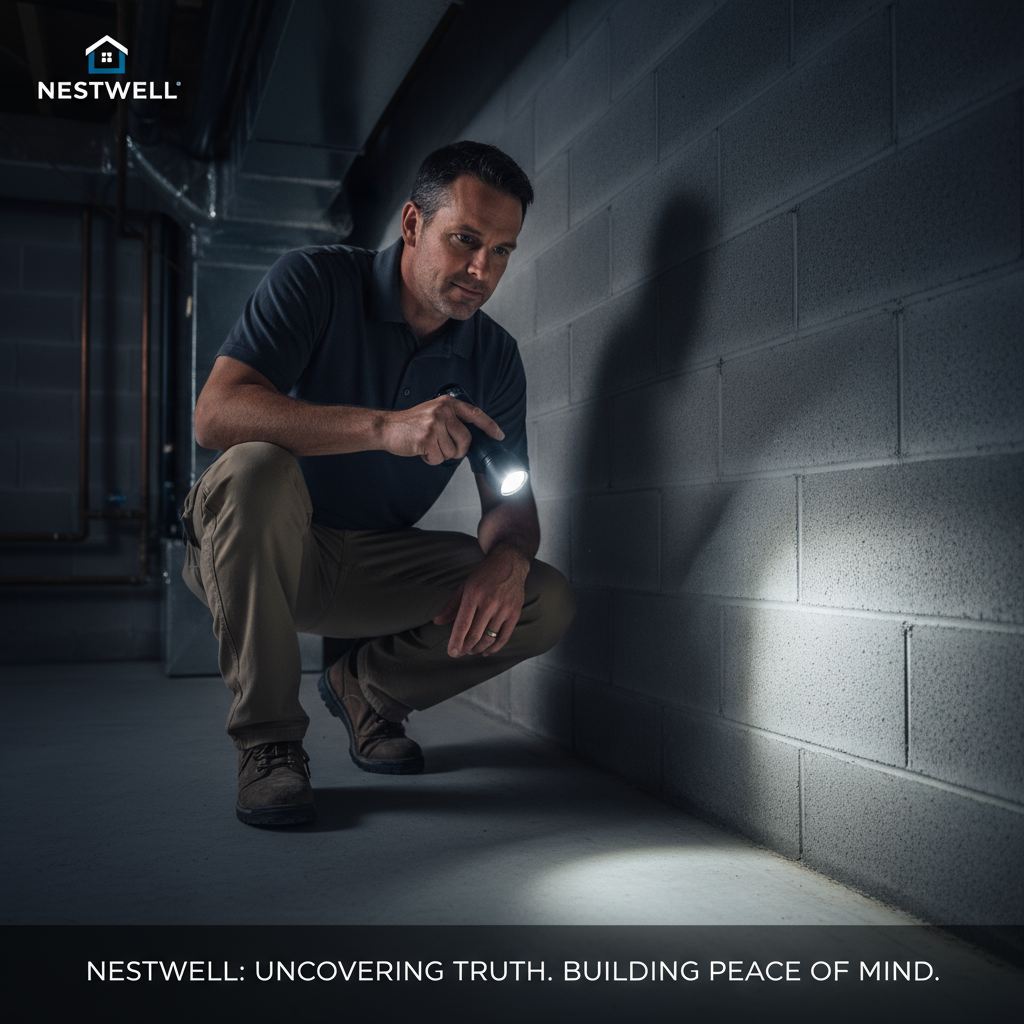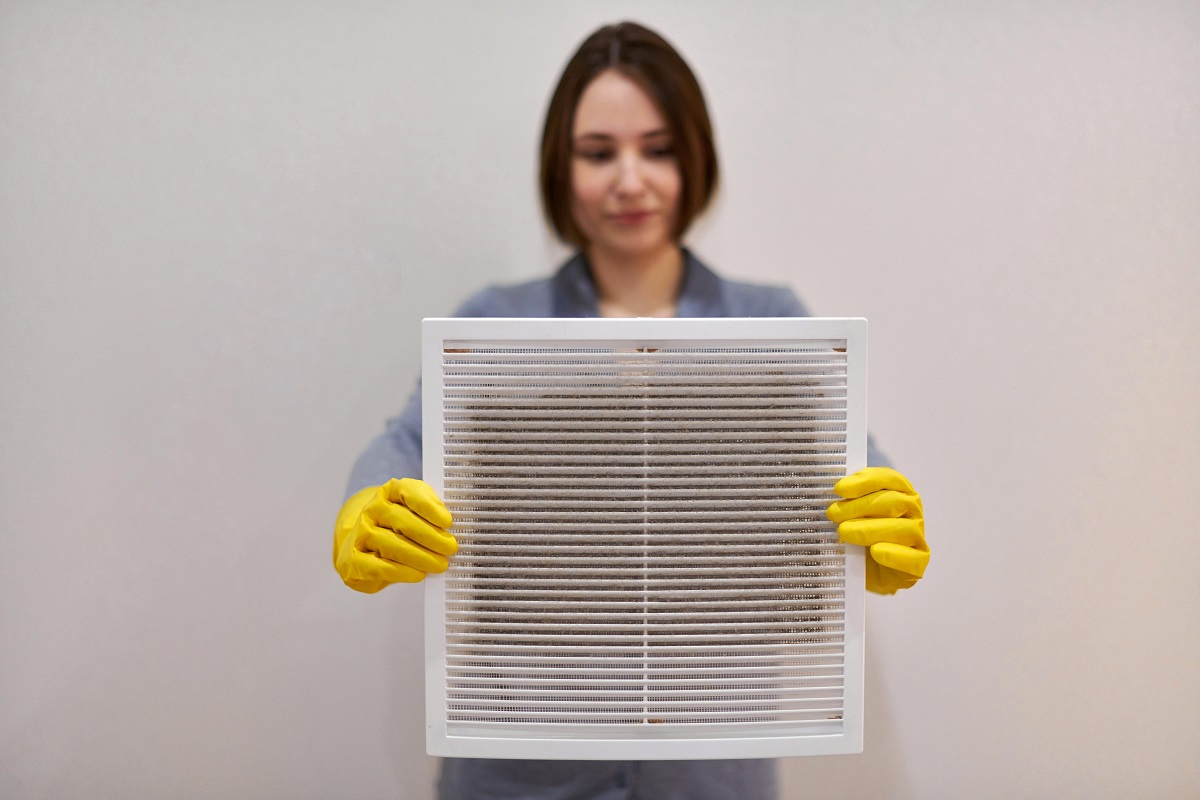How to Perform a Home Mold Inspection: A Professional's Guide

How to Perform a Home Mold Inspection: A Professional's Step-by-Step Guide
Table of Contents
- Introduction: Why a Healthy Home Starts with a Confident Inspection
- What Are the Real Causes of Mold in a House?
- What Are the Key Signs of Mold in a House?
- Where Does Mold Grow in Homes? Your Room-by-Room Inspection Guide
- DIY Mold Inspection Steps: What You Can Do vs. What a Pro Can Do
- Here's Exactly When to Get Professional Mold Inspection
- How Can You Implement Effective Mold Prevention Methods?
- Frequently Asked Questions (FAQ) About Home Mold
TL;DR: Key Takeaways
- A proper mold inspection goes beyond a simple visual check; it requires investigating the root causes of mold in house, which is almost always excess moisture.
- Key signs of mold in house to watch for include musty odors (a crucial clue), visible growth in various colors, and persistent allergy-like health symptoms.
- Focus your inspection on high-risk areas like basements, attics, and bathrooms, as these are common zones for moisture problems.
- While following DIY mold inspection steps can identify obvious issues, it often misses hidden dangers. To truly understand the health of a property, a professional assessment is necessary.
- For real estate agents, inspectors, and property managers, the Nestwell Home Health Report transforms ambiguity into a verifiable metric, providing clarity, identifying risks, and offering actionable solutions.
Introduction: Why a Healthy Home Starts with a Confident Inspection
A mysterious spot on the wall, a faint but persistent musty smell in the basement, or a child’s unending stuffy nose—these are common worries for homeowners, potential buyers, and tenants. These subtle signs can create significant anxiety, leaving you to wonder if there’s a hidden problem lurking within the property. The fear of mold is real, but taking control starts with knowledge and a clear plan of action.
That's why learning how to perform a home mold inspection is the essential first step toward peace of mind and protecting your property's value. This guide will walk you through the entire process, empowering you to identify potential issues with confidence. We will explore the common signs of mold, uncover its root causes, provide a room-by-room inspection guide, and explain the critical difference between a simple do-it-yourself check and a comprehensive professional assessment.
Ultimately, the goal isn't just to find mold; it's to understand the home's complete environmental health profile. For real estate professionals, home inspectors, and property managers, this deeper understanding is transformative. A platform like Nestwell provides this next level of clarity, turning complex environmental data into straightforward, actionable insights that help you make data-driven decisions, build trust, and ensure a healthy living space for everyone.
What Are the Real Causes of Mold in a House?
Mold is often misunderstood. Many people believe its presence is a sign of a dirty or poorly kept home, but that’s rarely the case. The truth is much simpler: mold is a moisture problem. Mold spores are microscopic and naturally present everywhere, both indoors and outdoors. They float harmlessly in the air until they land on a damp surface. When these spores find moisture combined with a food source—like wood, paper, drywall, or even dust—they begin to grow and multiply.
Therefore, the true causes of mold in house are not the spores themselves, but the sources of excess moisture that allow them to thrive. To effectively tackle a mold issue, you must first identify and fix the underlying water problem. Simply cleaning the visible mold without addressing the leak or humidity will only result in the mold returning.
Common sources of moisture that lead to mold growth include:
- Plumbing Leaks: Slow drips from pipes under sinks, behind toilets, or inside walls create a perfect, hidden environment for mold.
- Roof and Foundation Leaks: Water seeping in from a damaged roof, cracked foundation, or poorly sealed windows can saturate building materials.
- High Indoor Humidity: Poor ventilation can trap moisture from daily activities like showering, cooking, and laundry. When indoor humidity levels consistently stay above 60%, it creates an environment where mold can grow on various surfaces without a direct leak.
- Condensation: When warm, moist air comes into contact with cold surfaces like single-pane windows, metal pipes, or poorly insulated exterior walls, water droplets form. This condensation provides a steady supply of water for mold.
- Past Water Damage: Events like floods, burst pipes, or appliance overflows can lead to severe mold problems if the affected areas are not dried out completely and quickly, usually within 24 to 48 hours.
Understanding these causes is crucial because it shifts the focus from just cleaning a spot on the wall to fixing the home’s health. It’s also important because the health effects of mold exposure can be significant. For many, it triggers allergic reactions like sneezing, runny nose, and itchy eyes. For individuals with asthma, it can lead to more frequent and severe attacks. Prolonged exposure can cause respiratory irritation, headaches, and fatigue, underscoring why a thorough inspection is not just about property maintenance, but about protecting well-being.
What Are the Key Signs of Mold in a House?
Detecting mold isn't always as simple as finding a large, black patch on the wall. The signs of mold in house can be subtle and often require you to use more than just your eyes. A comprehensive inspection involves using all your senses to pick up on clues that might indicate a hidden issue. By knowing what to look, smell, and feel for, you can become much more effective at identifying potential problems early.
Visual Clues: More Than Just Black Spots
When people think of mold, they usually picture black mold. However, mold comes in a wide variety of colors and textures, which is why accurate mold on walls identification requires looking for more than one specific type. Be on the lookout for:
- Varied Colors and Textures: Mold can appear as spots or patches that are black, green, gray, white, orange, or even pink. The texture can be fuzzy, slimy, or powdery. It can sometimes be mistaken for soot or dirt.
- Stains and Discoloration: Persistent water stains on ceilings, walls, or floors are a major red flag, even if you don't see active mold growth. These stains indicate a past or present moisture problem, and the area should be investigated closely.
- Structural Changes: Water and mold can damage building materials. Look for bubbling or peeling paint, wallpaper that is pulling away from the wall, or baseboards and trim that appear warped or swollen. These are often signs of moisture trapped behind the surface.
Olfactory Clues: The Truth About Mold Smell Identification
Often, your nose will know before your eyes do. A musty, earthy smell is one of the most reliable indicators of an active mold colony, especially one that is hidden behind walls or under flooring. This part of mold smell identification is critical because if you can smell mold, it means it is actively growing and releasing microbial volatile organic compounds (mVOCs), which create that distinct odor.
Never ignore a persistent musty smell. It is your body’s natural alarm system telling you that there is an active moisture source somewhere that needs to be found. The smell might be stronger in certain areas of the house, like a basement, a specific closet, or a bathroom, which can help you narrow down the location of the problem. Don't dismiss it as just a "dank basement smell"—it's a call to action.
Health Clues: Is Your House Making You Sick?
Sometimes, the first signs of a mold problem have nothing to do with the house itself, but with the health of the people living in it. If you or your family members experience persistent, allergy-like symptoms that seem to improve when you leave the house, it could be related to indoor air quality.
Pay attention to symptoms such as:
- Chronic stuffy or runny nose
- Frequent sneezing or coughing
- itchy, watery eyes
- Unexplained headaches
- Skin rashes
- Worsening of asthma symptoms
While these symptoms can be caused by many things, if they linger for weeks and seem to be connected to the time spent indoors, it is a strong reason to conduct a thorough mold inspection. These health clues can be particularly important for identifying problems that aren't visually apparent.
Where Does Mold Grow in Homes? Your Room-by-Room Inspection Guide
Now that you know what to look for, it's time to conduct a physical walkthrough. Knowing where does mold grow in homes is key to an effective inspection, as mold favors dark, damp areas with poor air circulation. By systematically checking these high-risk hotspots, you can uncover problems that might otherwise go unnoticed. Use a good flashlight to get a clear view, even in areas that seem well-lit.
Your Bathroom Mold Checklist
Bathrooms are ground zero for mold growth due to the constant presence of water and steam. A thorough inspection is essential. Follow this bathroom mold checklist:
- Shower and Tub: Carefully inspect the tile grout and the caulk seams around the edges of the shower and tub. Discolored or cracked grout can let water seep behind the tiles. Check the shower curtain or door for any signs of growth.
- Sink and Vanity: Look under the sink for any signs of slow leaks from the drainpipe or water supply lines. Check inside the vanity cabinet, especially in the back corners, for water stains or musty odors.
- Toilet: Inspect the base of the toilet where it meets the floor. A faulty wax ring can cause slow, hidden leaks. Also, check the wall behind the toilet for any discoloration.
- Walls and Ceiling: Look for any signs of peeling paint or dark spots on the ceiling directly above the shower, which can indicate that moisture is not being properly ventilated.
- Exhaust Fan: Turn on the bathroom fan. Is it working effectively? A weak or non-functional fan fails to remove moist air, leading to high humidity and condensation, which fuels mold growth. A simple test is to see if it can hold a single square of toilet paper against the vent.
Pro-Level Basement Mold Inspection Tips
Basements and crawl spaces are notoriously damp and are primary locations for mold. Use these basement mold inspection tips for a professional-level check:
- Perimeter Check: Walk the entire perimeter of the basement, inspecting the corners where the foundation walls meet the floor. This is a common area for water to seep in from the outside.
- Wall Inspection: Look for a white, chalky substance on concrete or brick walls. This is called efflorescence, and while it isn't mold, it is a sign that water is migrating through the masonry, which can lead to mold growth on other surfaces.
- Hidden Areas: Check behind stored items, furnaces, and water heaters. These areas often have limited airflow and can hide moisture problems. Look around the sump pump pit for any signs of dampness or overflow.
- Windows and Ducts: Inspect the area around basement windows for leaks or condensation. Also, look for signs of mold or rust on HVAC ductwork that runs through the basement.
Uncovering Issues: Mold in Attic Detection
An attic is another area that is often overlooked but can harbor serious mold problems, typically caused by roof leaks or poor ventilation. Proper mold in attic detection involves looking for specific clues:
- Underside of the Roof: The most common place to find attic mold is on the underside of the roof sheathing. Look for dark black or gray staining, which often follows the lines of the trusses or rafters.
- Ventilation Issues: Check to see if the soffit vents (located where the roof meets the walls) are blocked by insulation or debris. Blocked vents trap heat and moisture, leading to condensation on the cold roof sheathing, especially in winter.
- Insulation: Look for insulation that appears damp, compressed, or discolored. Wet insulation is ineffective and is a sign of a roof leak or serious condensation problem.
- Frost: In colder climates, look for signs of frost on the nails or on the sheathing itself during the winter. When the attic warms up, this frost melts, creating the water source for mold.
- Leaks: Check around any roof penetrations, such as chimneys, plumbing vents, or skylights, for signs of water staining on the sheathing or insulation below.
Other High-Risk Hotspots
Beyond the main areas, don't forget to check these other common problem spots:
- Kitchen: Look under the kitchen sink, behind the refrigerator (especially if it has an ice maker), and around the dishwasher.
- Windows: Inspect window frames and sills for condensation and resulting mold growth, especially on older, less efficient windows.
- Laundry Rooms: Check behind the washing machine for leaky hoses and ensure the dryer vent is properly connected and clean.
- HVAC System: Look inside HVAC closets and registers for any signs of musty smells or visible growth. A contaminated system can distribute mold spores throughout the entire house.
DIY Mold Inspection Steps: What You Can Do vs. What a Pro Can Do
Following the room-by-room guide and using your senses are essential DIY mold inspection steps that any property owner, manager, or real estate agent can and should perform. This initial walkthrough can help you identify obvious signs of water damage and visible mold, allowing you to catch problems early. However, it's crucial to understand the limitations of a do-it-yourself inspection.
The biggest challenge is knowing how to spot hidden mold. Growth can occur inside walls, beneath flooring, or deep within ceiling cavities, making it completely invisible to the naked eye. While clues like peeling paint or warped baseboards suggest a problem, they don't confirm the extent or severity of the mold infestation. A DIY visual check can only see the surface; it can't measure moisture levels within building materials or see temperature differences that indicate hidden leaks. This is where a professional assessment becomes invaluable.
A Critical Home Mold Test Kits Review
Many people, frustrated by the limitations of a visual inspection, turn to store-bought home mold test kits. These kits typically involve a petri dish that you leave open to collect air samples or a swab you use on a visible spot. Based on a thorough home mold test kits review, these products are often misleading and can create more confusion than clarity.
Here's why they fall short:
- They Lack Context: These kits can confirm the presence of mold spores, but as we've discussed, mold spores are everywhere. A positive result doesn't tell you if you have an abnormal or dangerous level of mold. It can't distinguish between a few harmless spores floating in from an open window and a serious, active colony inside your walls.
- They Can't Find the Source: The most critical part of any mold investigation is finding the moisture source. A petri dish will not tell you that a slow leak behind your shower is the cause of the problem. Without finding and fixing the source, the mold will always come back.
- They Don't Provide an Action Plan: A test kit might tell you "mold is present," but it offers no guidance on what to do next. It can't determine the scope of the contamination, the type of remediation needed, or how to prevent it from happening again.
A petri dish can't give you an action plan. A Nestwell Home Health Report does. It moves you from "Is there a problem?" to "Here is the exact scope of the problem and what to do about it." A professional assessment uses specialized tools like moisture meters, thermal imaging cameras, and targeted air and surface sampling that are analyzed by an accredited lab. This data is then translated into a comprehensive report that identifies the source, scope, and solution—providing the actionable insights that DIY methods and test kits simply cannot deliver.
Here's Exactly When to Get Professional Mold Inspection
While a DIY check is a good starting point, there are clear situations when you must call in an expert. Knowing when to get professional mold inspection can save you time, money, and protect the health of those in the property. Here are the key triggers:
- After a Major Water Event: If the property has experienced a flood, a burst pipe, a sewage backup, or a significant roof leak, a professional inspection is non-negotiable. Even if the area looks dry, moisture can be trapped in subfloors, wall cavities, and insulation.
- When You Smell Mold But Can't See It: As discussed, a musty odor is a major red flag for a hidden mold problem. If your nose tells you something is wrong but a visual inspection reveals nothing, you need a professional with the tools to find the hidden moisture source.
- During a Real Estate Transaction: For buyers, a professional mold inspection provides peace of mind and identifies potential hidden costs. For sellers, it offers transparency and can prevent last-minute issues that could derail a sale. A clean bill of health is a powerful selling point.
- If Residents Have Persistent, Unexplained Health Issues: If occupants are experiencing chronic respiratory symptoms, allergies, or headaches that align with mold exposure, an inspection is needed to rule out or confirm the home's environment as the cause.
- When Visible Growth is Extensive: If you find a large area of mold (generally defined as more than 10 square feet), it’s best handled by professionals. This indicates a significant underlying moisture problem, and improper removal can release a massive amount of spores into the air, contaminating other parts of the home.
For real estate agents, inspectors, and property managers, recommending a professional inspection powered by Nestwell is not an extra cost—it's a critical value-add. It replaces fear and uncertainty with objective data. A verifiable "Home Health Score" turns a potential negotiation nightmare into a transparent, marketable feature that builds client trust and differentiates your services in a competitive market.
How Can You Implement Effective Mold Prevention Methods?
The best way to deal with mold is to prevent it from ever starting. Prevention is all about controlling moisture. Once you have addressed any existing issues, implementing these proactive mold prevention methods will help keep your property healthy and mold-free for the long term.
- Control Humidity: Keep indoor humidity levels between 30% and 50%. You can monitor this with an inexpensive device called a hygrometer. Use dehumidifiers in naturally damp areas like basements and crawl spaces.
- Ensure Proper Ventilation: Use exhaust fans in bathrooms and kitchens to vent moist air directly outside (not into the attic). Open windows when possible to encourage air circulation. Make sure your clothes dryer vents to the exterior.
- Fix Leaks Promptly: Address even the smallest leaks from faucets, pipes, or roofs immediately. A tiny drip can create a huge problem over time. Regularly inspect hoses on appliances like washing machines and dishwashers.
- Maintain Gutters and Downspouts: Clean your gutters regularly and ensure downspouts direct water at least five feet away from the foundation. This prevents water from pooling around the base of the home and seeping into the basement or crawl space.
- Grade Your Yard Correctly: The ground around your foundation should slope away from the house. This ensures that rainwater flows away from the property instead of towards it.
While there are many types of common household mold, including species like Aspergillus, Cladosporium, and the infamous Stachybotrys (black mold), the prevention and remediation strategies are universal. While scientific names can be intimidating, the solution is always the same for all types of common household mold: safely remove the existing growth and eliminate the moisture source. The specific type is far less important than having a clear and effective action plan.
Frequently Asked Questions (FAQ) About Home Mold
Q: What's the most reliable way to handle mold on walls identification?
A: Visual signs like discoloration and texture are a starting point, but professional testing is the only way to confirm the issue and understand the full scope. An assessment that generates a comprehensive report, like a Nestwell Home Health Report, can determine if the problem is merely superficial or if it indicates a deeper, more serious issue within the wall cavity that requires intervention.
Q: My house smells musty, but I can't find any mold. What should I do?
A: A musty odor is a primary element of mold smell identification and strongly suggests a hidden moisture problem. This is a clear sign that you need to move beyond a simple visual check and get a professional inspection. An expert can use tools like moisture meters and thermal cameras to locate the hidden water source that is feeding the mold growth.
Q: Is it worth getting my mold tested to find out which of the types of common household mold I have?
A: While professional lab analysis can identify the exact species, the remediation protocols are the same for all common molds. The focus should always be on safe removal and fixing the underlying moisture problem. The specific type of mold is less important than implementing a sound action plan to resolve the issue and prevent its return.
Q: Based on your home mold test kits review, are they ever useful?
A: They can confirm the presence of mold spores but provide no actionable context. This can lead to false alarms if they detect normal background levels, or a false sense of security if the test area happens to miss the problem. They don't identify the source, concentration, or solution—the very problems a comprehensive Nestwell Home Health Report is designed to solve by providing clear, data-driven answers.
Q: How does a Nestwell Home Health Report help me as a real estate agent or property manager?
A: It replaces fear, uncertainty, and negotiation hurdles with objective, easy-to-understand data. By providing a clear "Home Health Score" and a transparent report, you offer buyers and tenants verifiable proof of a healthy living environment. This protects property value, minimizes liability, and builds trust. It is a powerful tool for differentiating your services and closing deals with confidence.






